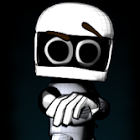I'm creating a model that's intended for others to use. Right now, I'm at the UV-mapping phase, and I find myself uncertain:
The model in question has a fair few elements, and even with mirroring halving the UV-space being used, the various UV-maps seem to take up a fair bit of space.
Now, I could just arrange them as-is into one UV-map and call it a day. However, that means either having a rather large texture-map, or having blurry textures.
A large texture-map would be a simple solution--but how large is too large? Would a 4096x4096 texture-map be too much to dedicate to a single character…?
Conversely, I could adjust the UV-maps to minimise space--squashing areas with little detail--and have sections of similar colour overlap. But doing either might incur consequences should someone want to use the UV-coordinates for something other than the textures that I provide.
If the model were for my own use, there would likely be little trouble here: I would likely have some idea of how it's to be used. But as I intend to offer it to others, I'm not quite sure of what's wise here.
So I'm thus uncertain, and come here to ask for advice on the matter!








